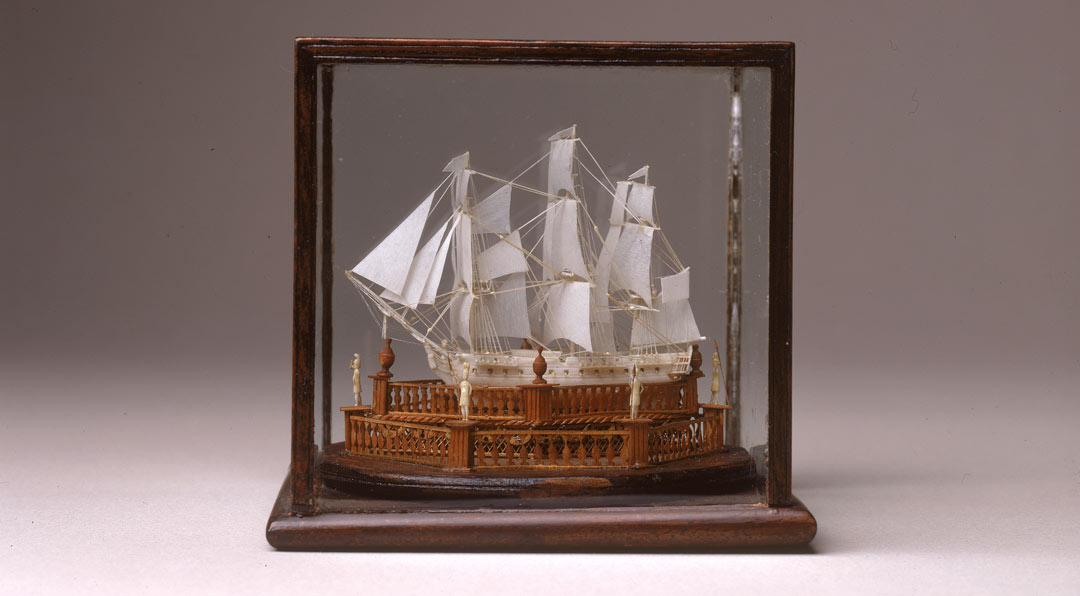Shrunken worlds

Hands up who’s spent a lot of time during lockdown venturing into areas of their homes more typically given a wide berth; lofts, basements, garages, cupboards under the stairs, that little room at the back of the house too small to be a bedroom that’s ended up as a dumping ground for things you didn’t know where to put? Me too. I ventured into my loft pretty soon after lockdown began, with two ideas in mind. The first was that I was sure there were some jigsaws up there somewhere, and the second was that this was an ideal time to clear out some of the other stuff that had accumulated. I’ll be honest, I was much more successful in my first goal than the second. I found doing the jigsaws preferable to sorting out the junk. Whilst up there though I found something from my childhood that gave me an insight into why I do what I do today.
Any child of the 90s will likely remember Polly Pockets, the little compacts that opened up to reveal a world in miniature complete with tiny figures and even animals. I had quite the collection and it turns out a lot of it is still in my loft. My attempt to ‘sort through them’ looked suspiciously like just playing with them and that’s because I’ve never lost my fascination for miniaturised objects. I’m as charmed by the miniature now as I was then, and it’s why I love our models collection here at the Merseyside Maritime Museum so much.
A huge variety of models
As the Assistant Curator for Maritime History I get to work across the whole of the Maritime collections, but over the years I think it’s the models collection that I’ve been most drawn to. The ship models range from mere millimetres in length to over 5 metres, some with little crew or passengers aboard, some with rigging so fine it’s been fashioned from human hair. There are other models in the collections too, models of the docks, models of engines, models showing ship interiors, a model of Resurgam, the world’s first mechanically powered submarine, and a dollshouse made at sea for a Captain’s daughter.

Resurgam, looking like it’s come straight from the pages of Jules Verne
Our models are works of art, many of them made with great skill, some by seafarers themselves. They’re not just objects of beauty though, many of them provide a record of ships long gone. They are a way to peep back in time at some of history’s most famous vessels, Lusitania, Titanic, the QE2. The builder’s models in particular are made perfectly to scale giving a better idea than any painting or blueprint can what it might have been like to walk the decks of those great ships. Some of them are so detailed you can imagine being able to go in through one of the tiny doors and find yourself in another world.

HMS Neptune, our oldest ship model dating from around 1683
The earliest model in our collections dates back to the reign of Charles II. Our model of the HMS Neptune was built at the Deptford dockyard at the same time as the real Stuart battleship she represents. It was customary in that era to make models of all the important ships, in the days long before photography the modelmaker’s craft was even more important for recording vessels. The Neptune gives us today a chance to visualise what it might have been like to stand on the decks of a 17th century battleship.

The ‘surreal’ Sarah. This diorama has lots of very odd elements you spot when you get up close to her, particularly due to the lack of scaling
Whilst some models are painstaking recreations of reality though, other models are striking flights of fancy such as diorama pictured above, described in its collections file as giving a slightly surreal impression. We’ve got models made from salt and even models made from bones. Though the later might sound grim, they can in fact be surprisingly lovely. We hold a beautiful collection of dozens of wood and bone models made around 1800 by French prisoners of war interned in Liverpool during the Napoleonic wars. They made these models from scraps of wood and bones from their food and the skill shown in them is remarkable. It’s tempting to think that the boats perhaps represented to their makers the dream of freedom and passage home.

French POW model made from bone and other materials
Another section of our collections that has a dreamy quality to it in quite a different way is the ships in bottles collection. These are amongst the quirkiest of all our models and include some brilliant dioramas and some unusual bottle alternatives. We’ve got a ship in a matchbox and at least two different ships in lightbulbs. We’ve even got a ship in a bottle that served as a form of self-portraiture for its creator.

One of our ships in lightbulbs, a brilliant variation of the ship in a bottle craft
For me there’s no better part of my job than when I end up in the models store or conservation studio getting up close to these miniature masterpieces. There’s a magic to small things that children always love and, having seen adults examining ship models and dollhouses in our galleries across National Museums Liverpool, I think it’s a magic most of us appreciate long after we’ve grown up. Personally I don’t think I’ll ever grow up enough to stop being wowed by these small and perfectly formed worlds. It’s probably why I’ll likely never finish sorting out those Polly Pockets, I’m inevitably just going to start playing with them.
